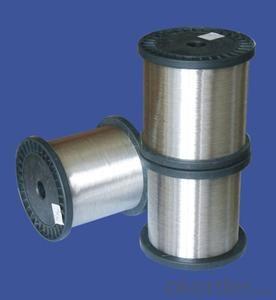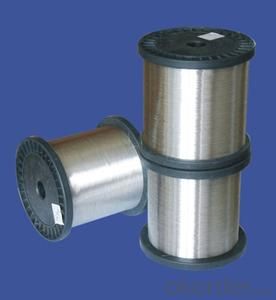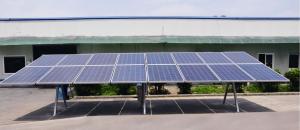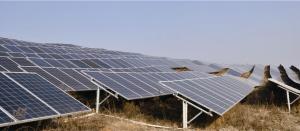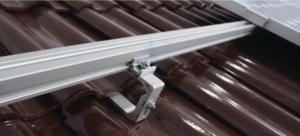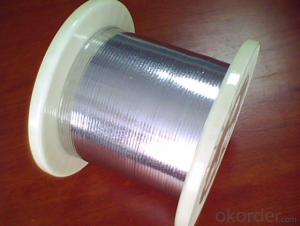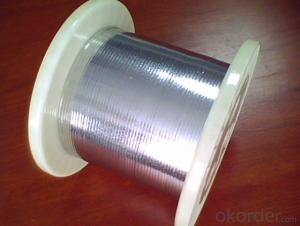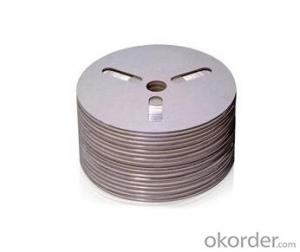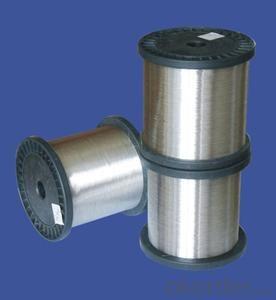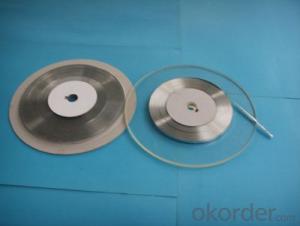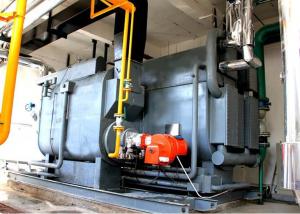Connect-Inter Ribbon-Machine Welding,0.2*1.6
- Loading Port:
- China Main Port
- Payment Terms:
- TT or LC
- Min Order Qty:
- -
- Supply Capability:
- -
OKorder Service Pledge
OKorder Financial Service
You Might Also Like
Structure
We produce custom engineered solar tabbing and bus wire helping to attain the highest efficiencies possible for each unique module design. Our Research and Development team can assist you with your needs evaluation and our world-wide manufacturing facilities are strategically located for large volume production.
Feature
Cold Rolling Mills for manufacturing Photovoltaic (PV) Ribbon:
Cold Rolling Mills for manufacturing Photovoltaic Ribbon
This machine is for making Bare flat copper conductors which is using PV Ribbon Wire , Tinned plated flat copper conductors which is using FFC or materials and it was designed to make the best quality products with high productivity as well as easy to control.
Machine capacity
Tinned plated flat copper conductors which is using FFC
Images
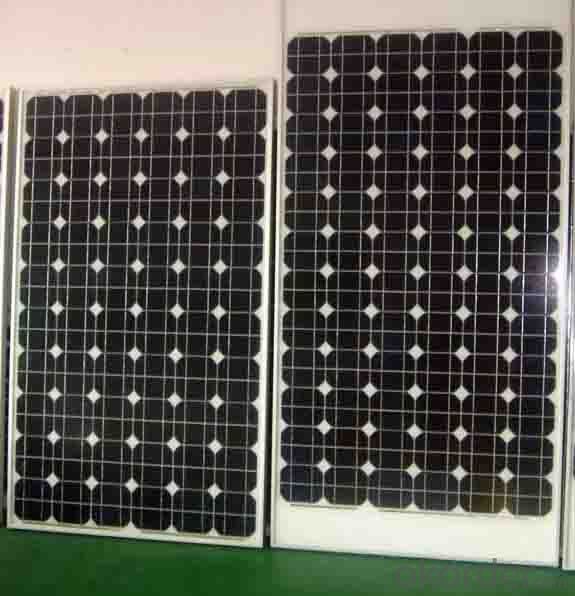
Specifications
Visual Inspection
The visual inspection is using perception to inspect the PV Ribbon Wire. The important
aspect of this inspection is the coated copper must free from:
Whether or not there is any flaw is checked.
Whether or not its surface has uniform lustrous hue be inspected.
Whether or not its surface free from thick.
Coating Thickness Test
The measurement to PV Ribbon Wire is using the external micrometer (0. 001mm)or its equivalents.
The test piece of about 250px long shall be taken and the OD of the wire shall be measured at
3 points.Each point shall be measured 2 times
Thickness Of Solder Coated Wire.After the 3 points of wire be measured,dip the test piece into nitric acid for about 5 minutes,the diameter of core wire shall be measured. One half of the two measurements will give the thickness of solder coated wire.
*Recommended temperature of soldering iron tip : 280~320°C
( According to different thickness, adjust the suitable temperature of soldering )
FAQ
Q:How to guarantee the quality of the products?
A:We have established the international advanced quality management system,every link from raw material to final product we have strict quality test;We resolutely put an end to unqualified products flowing into the market. At the same time, we will provide necessary follow-up service assurance.
Q:Can we visit your factory?
A:Surely, I will arrange the trip basing on your business schedule.
Q:Which payment terms can you accept?
A:T/T,L/C,Moneygram,Paypal are available for us.
- Q: What is the difference b/w them which one is better .
- In the practical sense, the differences are trivial. I'd buy on price per watt, unless space is at a premium (it isn't for most installations).
- Q: Can solar cells be used in air conditioning systems?
- Yes, solar cells can be used in air conditioning systems. Solar cells can generate electricity from sunlight, which can then power the air conditioning unit, reducing the reliance on traditional energy sources and making the system more environmentally friendly and cost-effective.
- Q: What happens to solar panels during a power outage?
- During a power outage, solar panels do not generate electricity as they rely on the grid for their functioning. This is because most solar panel systems are grid-tied, meaning they are designed to feed excess power back into the grid and draw power from the grid when needed. However, some off-grid solar systems equipped with battery storage can continue to operate during a power outage, providing electricity to the connected devices or storing excess energy for later use.
- Q: What is the impact of solar cells on reducing greenhouse gas emissions?
- Solar cells have a significant impact on reducing greenhouse gas emissions as they generate clean and renewable energy from sunlight, without emitting any greenhouse gases. By replacing fossil fuel-based electricity generation, solar cells help reduce the carbon dioxide and other harmful emissions that contribute to climate change. This transition towards solar energy plays a crucial role in mitigating global warming and creating a more sustainable future.
- Q: How does a microinverter differ from a string inverter?
- A microinverter differs from a string inverter in that it is a small, individual inverter attached to each solar panel, converting the DC power generated by the panel into AC power. On the other hand, a string inverter is a larger central inverter that is connected to multiple solar panels in a string, converting the combined DC power into AC power. The main advantage of a microinverter is that it allows for maximum power point tracking and independent operation of each panel, increasing the overall efficiency and output of the solar system. Additionally, microinverters provide monitoring capabilities at the panel level, making it easier to identify and address any issues or malfunctions.
- Q: Can solar collectors be used in oil and gas extraction?
- Yes, solar collectors can be used in oil and gas extraction. Solar thermal technology can be utilized to generate steam for enhanced oil recovery (EOR) processes, such as steam flooding or cyclic steam stimulation, which help to increase the production of oil and gas from reservoirs. By harnessing solar energy to produce steam, this approach reduces the reliance on fossil fuels for EOR operations, making it a more environmentally friendly and sustainable method.
- Q: Are solar lights suitable for parking lot lighting?
- Yes, solar lights can be suitable for parking lot lighting. Solar lights are an energy-efficient and sustainable option for illuminating parking lots. They can provide adequate lighting while reducing electricity costs and carbon emissions. However, the suitability of solar lights for parking lot lighting may depend on various factors such as the size of the parking lot, the desired level of brightness, and the amount of sunlight available in the area.
- Q: Can solar chargers charge electric tractors?
- Yes, solar chargers can charge electric tractors. Solar chargers harness energy from the sun and convert it into electricity, which can then be used to charge the batteries of electric tractors. This allows for a sustainable and environmentally friendly way to power and recharge the tractors.
- Q: Can a solar inverter be used with a wind turbine?
- Yes, a solar inverter can be used with a wind turbine. Both solar panels and wind turbines generate DC (direct current) electricity, which needs to be converted to AC (alternating current) to be used in most household appliances and the electrical grid. A solar inverter is designed to convert DC electricity from solar panels into AC electricity, and it can also be used to convert the DC electricity generated by a wind turbine into AC electricity. However, it is important to note that wind turbines usually generate higher voltage and fluctuating currents compared to solar panels, so the inverter used with a wind turbine may need to be specifically designed to handle these variations. Additionally, wind turbines often have their own specialized inverters that are optimized for their unique electrical characteristics.
- Q: What is the effect of impurities on the performance of solar silicon wafers?
- Impurities have a detrimental effect on the performance of solar silicon wafers. These impurities can interfere with the flow of electrons, reducing the efficiency of the solar cells. They can also cause defects in the crystal lattice structure, leading to decreased electrical conductivity and overall performance of the wafers. Therefore, minimizing impurities is crucial for maximizing the efficiency and reliability of solar silicon wafers.
Send your message to us
Connect-Inter Ribbon-Machine Welding,0.2*1.6
- Loading Port:
- China Main Port
- Payment Terms:
- TT or LC
- Min Order Qty:
- -
- Supply Capability:
- -
OKorder Service Pledge
OKorder Financial Service
Similar products
Hot products
Hot Searches
Related keywords
